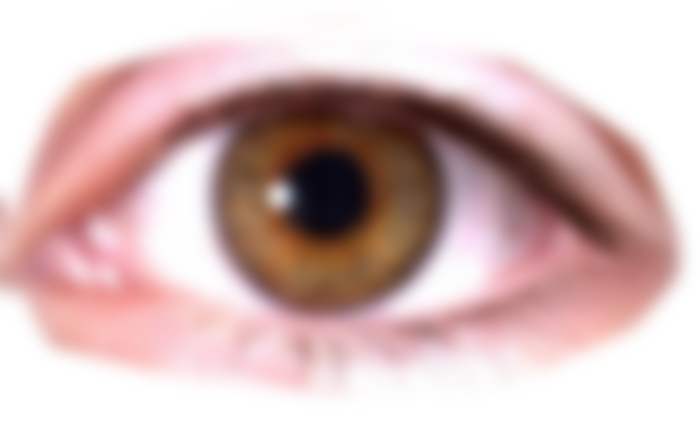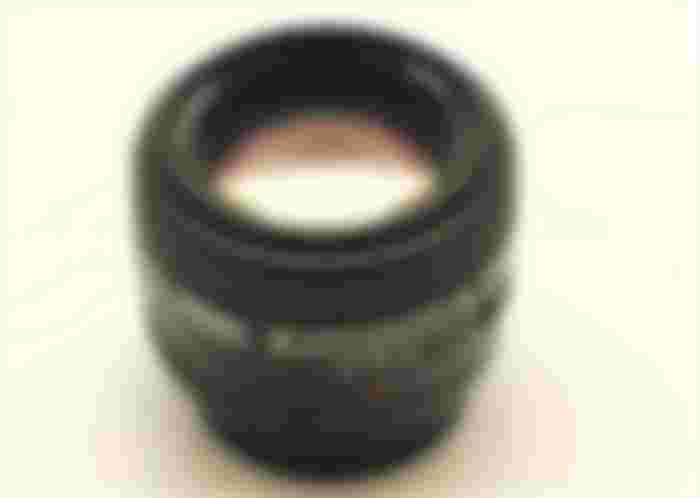How often do we see someone with reading difficulties, perhaps holding a piece of paper with an outstretched arm? Others can only read when the page is very close to their eyes. Why these differences of vision? It has a lot to do with how the lens works.
Lenses that bend the light
Light reflected from objects around us passes through the lens of the eye and forms images on the retina at the back of the eyeball. This activates the nerves leading to the brain, which develops the moving images thus formed. But these images are upside down or upside down! What a blessing to us that the Eye Designer has also educated the brain on how to convert these images the right way!
The inversion of images when they enter the eye occurs because the lens of our eye is convex, similar in size to an aspirin tablet. And this type of lens has the unusual characteristic of "twisting" the light rays passing through it to form an inverted image of the object which gives rise to the rays.


You can illustrate this with a magnifying glass. Like two saucers placed end to end, the magnifying glass is thicker in the center than at the edges. At certain distances this lens can be used to give a magnified view of something, due to the way it bends the rays of light passing through it. You can even read this page using these lenses. However, magnification will only occur when the displayed object is held close to the lens, i.e. near twice the focal length of the lens. Now increase the distance between the eye and the magnifying glass. Hold it with your outstretched arm and look through a picture on the wall. You will notice that everything seems to be upside down. Why? Due to the internal curvature of light rays passing through the glass. The image is reversed.
Light rays passing through the center of a convex lens do not bend or refract to any noticeable degree. But those that hit the lens at a distance from the center refract to go through a defined point called the focal point. The distance between this point and the center of the lens is called the focal length.
Have you ever used a magnifying glass to light a fire? It is said that the ancient Greeks and Romans used glass vessels filled with water as "vessels of fire". The sun's rays would pass through the water, converging to focus on a combustible material and cause it to burn. To demonstrate this, you can focus the sun's rays on a sheet of paper by adjusting the distance between the lens and the paper to form a small white spot. It will soon get so hot that the paper will burn, as this white point is actually an image of the sun appearing at the focal point of the lens. Obviously, it's a good idea to never look at the sun through the lenses, especially with telescopes and binoculars, as this can cause irreparable damage to the eyes.
The other type of lens, called concave, has the shape of two saucers placed from one base to the other, being thicker at the edges than in the center. This lens deflects or diffuses the light rays which pass through it. Concave lenses are often used in combination with convex lenses and their ability to diffuse light rays has been adapted to aid vision.


Glass lenses have their problems
As you may have noticed, lenses are not pieces of glass like window glass, but are usually made of special glass with carefully measured angles and arc shapes according to complex lens formulas. Typically, when used in optical instruments, they are much thinner than portable reading glasses.
Simple lenses have several problems, the most common of which are spherical and chromatic aberrations. If you look closely at an image on a single lens display, you will notice what is called a spherical aberration. This is an image distortion, which occurs because the light rays from the object pass through the lens at slightly different angles and, therefore, are not strongly focused in the same place. We don't have this eye problem, and neither do we have a decrease in sharpness at the lens tip, which also happens in artificial lenses.
We also do not suffer from chromatic aberrations. The "white light", when sufficiently refracted, is divided into seven colors of the spectrum (red, orange, yellow, green, blue, indigo and violet), each refracted at a slightly different angle, focusing on each other. first, purple first with red last. This gives that image a rainbow fringe, called a chromatic aberration.
While it is impossible to correct all known aberrations in artificial lenses, they can be effectively masked by combining different precision lenses. They can be cemented with Canada balsam, a resin from American balsam fir. Some lenses are coated to prevent "ghosting" or reflections.
Complex systems are also used in telescopes, binoculars, and microscopes. They apply the principle of a convex objective lens to project an image into the microscope or telescope tube, which does not appear on any screen, but is designed to fit the focal length of an eyepiece. . The image formed on it is then viewed through the eyepiece, providing an enlarged view of the object.
The reverse narration of the image doesn't really matter under the microscope. (The slide shown can be reversed first.) But no ship's captain would be happy with her binoculars or telescope if the next port of call was reversed. For this reason, a corrective lens or prism assembly is inserted between the objective and the eyepiece to remedy this problem.
The manufacture of lenses by intelligent men implies a deep knowledge of optics, of the mathematical formulas of the refraction of light and, therefore, of the patient's skills, acquired and accumulated over many years of training by another specialist in these arts. . Since this is so, in the words of Isaac Newton when discussing the origin of life, "by what kind of reasoning do some people come to the incongruous conclusion" that the complex wonders of the natural world were born without an intelligent Creator?
Superlative lenses
When you look at the "black hole" in your eyes, you are really looking through the lens at the dark interior of the eyeball.

The small lens is held in place behind the colored iris by the ciliary muscles and follows the same principles of refraction that humans have applied to artificial lenses. The brain, by converting nerve impulses transmitted by the retina into colorful, three-dimensional moving images, gives us an exciting vertical view of something larger than the image of the retina, but still in optical proportion to our body. This is true whether it is a pea or a plate, a vase of lilac flowers, or magnificent snow-capped mountains.
The fact that we can look at a map on our lap for a moment and the next day see landscapes and mountains from miles away indicates that the eyepiece lens was perfectly designed. You can instantly bring sharp focus by correcting aberrations found in artificial lenses. How confusing it would be to have a distorted image that constantly changes with every movement of the head, with multi-colored stripes around each image!
The refractive and focusing agents of the eye, the lens itself, and the cornea (the transparent, curved layer of the eye) truly proclaim the intelligent work of the Creator. Charles Darwin also admitted the absurdity of his theory of natural selection when he considered the eye: "Suppose that the eye with all its inimitable devices adjusts the focus at different distances, admits different amounts of light, and from correcting for spherical aberration and the chromatic, which could have been formed by natural selection, seems, frankly admitted, absurd in the highest degree. "- The Origin of Species, p. 190
The spectacle lens
The eyepiece lens is extremely flexible and can be folded, pulled, or stretched and compressed. It is this ability in combination with the refractive power of the cornea that allows fast and accurate focusing without distortion. However, the aging process can harden the lens or attached ciliary muscles, making it difficult to adjust (called accommodation) and focus the light. Some have a weak focus due to the unusual shape of the eyeball, which can be longer or shorter than the average twenty-four millimeters (about an inch) in length.
Yes The lens of the eye is still when looking at distant objects, but the ciliary muscles stiffen it more to focus on near things. Due to this muscle activity, we experience "eye strain" when we work near the eyes or when we read or write.
If the eyeball is too long, the image concentrates under the retina and appears blurry, causing myopia. This can be corrected with the use of concave glasses, which divide the light entering the eye and help the convex lens of the eye to properly focus (form a focal point) on the retina.
On the other hand, hyperopia occurs because the eyeball is very small and the image forms behind the retina. A convex spectacle lens inserted in front of the eye will allow light rays to penetrate and guide them properly to the retina.
Imaging behind the retina also occurs when the lens of the eye loses its accommodating power and reaches a point where it cannot assume the deeply curved shape needed to focus on nearby objects. Usually affecting people after middle age, this condition is known as presbyopia, "old vision," which requires visualization of convex segments to correct the weakness.
We have to be very careful with our eyes. Do not pinch the eye if there is sand, and do not rub it with your fingers or dirty clothes. Another person can carefully remove the foreign body with a clean tissue, possibly even a doctor if necessary. And if you read at night, a well-lit, uniform room will be less tiring on your eyes than reading in a beam of light.
Lenses from other creatures
If you could look through the lenses of certain insects, you would find them useful for flying quickly or judging speed. Your eyes are made up of different lenses that produce individual images. The time between the movement of an image from one segment of the eye to another is used as an indication of its speed.
Vertebrates have paired lenses for vision. Some, like the horse, have a panoramic view, being able to see almost everything around them. Others, including humans, owls, and monkeys, have their eyes in front of their heads, providing a view in which each eye overlaps. Birds eyes have extraordinary lenses which produce both telescopic and microscopic effects. This allows them to have the clearest view of all creatures. Eagles, vultures, and other family members can see small things from amazing distances.
Numerous natural applications of the principles of refraction and optics have made man marvel at their use and adapt them to his liking.







👍👍👍